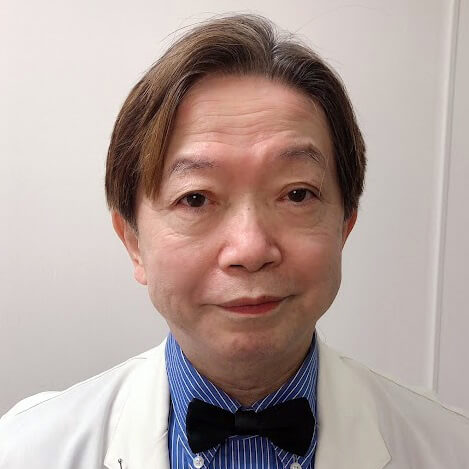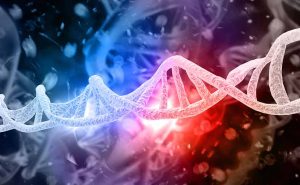Learn about DiGeorge Syndrome, its causes, symptoms, diagnosis, and treatment options. This comprehensive guide is supervised by a doctor to ensure accurate and reliable information.
What is DiGeorge Syndrome
DiGeorge syndrome is a disorder caused by a small deletion (microdeletion) in a part of the long arm of chromosome 22 (22q11.2 region) among the 23 chromosomes that humans have.
Various symptoms are caused by the aplasia of the parathyroid and thymus, and abnormalities in the formation of the heart and blood vessels. The main symptoms include hypoparathyroidism, immunodeficiency, and congenital heart disease. Particularly, congenital heart diseases such as Tetralogy of Fallot affect life prognosis and require heart surgery in the neonatal to infant period.
When is DiGeorge Syndrome Diagnosed
DiGeorge syndrome is suspected based on clinical symptoms after birth, and detailed examinations of immune function and congenital heart disease are conducted through blood tests and echocardiography. A definitive diagnosis is made by detecting the microdeletion through chromosomal testing.
Recently, with advances in genetic testing technology, it has become possible to detect small chromosomal abnormalities through NIPT (Non-Invasive Prenatal Testing), which can be performed prenatally. At Hiro Clinic NIPT, if you want to know the possibility of DiGeorge syndrome through NIPT (Non-Invasive Prenatal Testing), please feel free to consult us.
Causes of DiGeorge Syndrome
The cause of DiGeorge syndrome is a chromosomal abnormality. Human genes are composed of 46 chromosomes, with 23 pairs inherited from the father and mother. In DiGeorge syndrome, a part of the long arm of chromosome 22 (22q11.2) is deleted, leading to abnormalities in the expression of genes in this region and causing various symptoms. This deletion area also gives the syndrome its other name, 22q11.2 deletion syndrome.
Recent research has identified the TBX1 gene in this region as important, and its deletion causes heart disease, cleft palate, distinctive facial features, and hypocalcemia, which are characteristic symptoms of DiGeorge syndrome, as will be explained later.
Human sperm and eggs divide from 46 chromosomes to 23 during cell division, and fertilization restores the number to 46. However, chromosomal abnormalities can occur during the formation of sperm or eggs or during cell division of the fertilized egg. It is known that most cases occur due to “de novo mutations” even when there are no abnormalities in the parents’ genes or chromosomes.
DiGeorge syndrome is thought to be inherited in an “autosomal dominant” manner, meaning that if a person with the 22q11.2 deletion has children, there is a 50% chance of passing it on to their offspring. However, only about 10% of cases are inherited, with most arising from the de novo mutations mentioned above.
The incidence rate is estimated to be one in 4,000 to 5,000 people, making it a relatively rare congenital disorder.
Symptoms and Characteristics of DiGeorge Syndrome
In DiGeorge syndrome, the partial deletion of the long arm of chromosome 22 affects the formation of multiple organs. The most significantly impacted organs are the heart, thymus, and parathyroid glands, which are located from the neck to the chest.
Congenital Heart Disease
In DiGeorge syndrome, congenital heart defects are commonly associated, with Tetralogy of Fallot and interrupted aortic arch frequently observed. Particularly, Tetralogy of Fallot, characterized by four features: ventricular septal defect, overriding aorta, pulmonary stenosis, and right ventricular hypertrophy, is often present. It is said that about 15% of Tetralogy of Fallot cases are associated with DiGeorge syndrome.
If these congenital heart defects are severe, symptoms of heart failure (rapid and shallow breathing, poor weight gain, difficulty in feeding) or cyanosis may occur. The severity of congenital heart defects significantly affects life prognosis, making appropriate treatment necessary.
Recently, during the neonatal to infant period, procedures such as the Blalock-Taussig shunt and intracardiac repair surgeries like the Rastelli procedure have been performed, leading to improved life prognosis.
Characteristic Facial Features
In DiGeorge syndrome, characteristic facial features are known to be present, including low-set ears, cleft palate, a small and receding jaw, a small mouth, and wide-set eyes. If feeding difficulties due to cleft palate are observed, nutritional management such as tube feeding is implemented. Surgical intervention may be performed to provide definitive treatment for the cleft palate.
Thymic Hypoplasia
The thymus is an organ essential for the normal development of T cells, which play a central role in immune function. In DiGeorge syndrome, the thymus is either absent or underdeveloped, resulting in a reduced number of T cells. This leads to insufficient immune function and a lower resistance to various infections.
Hypoparathyroidism
The parathyroid glands are small, rice-grain-sized organs located behind the thyroid gland in the neck. They produce parathyroid hormone, which is crucial for regulating the levels of calcium and phosphorus in the blood. In DiGeorge syndrome, the parathyroid glands are underdeveloped, leading to a lack of parathyroid hormone production and resulting in hypocalcemia. Hypocalcemia can cause seizures and arrhythmias.
Intellectual Features
In DiGeorge syndrome, cases of intellectual disability and language developmental delay are observed. These issues often become noticeable before starting elementary school, and some individuals may also have developmental disorders that affect communication.

Tests and Diagnosis of DiGeorge Syndrome
DiGeorge syndrome is suspected based on clinical findings such as the presence of heart disease, hypocalcemia, and a decrease in T cell numbers. Detailed examinations include echocardiography to assess heart disease and blood tests to evaluate T cell function, hypocalcemia, and parathyroid hormone levels.
After suspicion of DiGeorge syndrome arises from these tests, interviews, and examinations, a definitive diagnosis is made by confirming the presence of the 22q11.2 deletion through chromosomal tests such as the FISH method or aCGH method.
Treatment of DiGeorge Syndrome
In DiGeorge syndrome, treating congenital heart disease, which significantly impacts life prognosis, is the most crucial aspect. As mentioned earlier, the most common condition, Tetralogy of Fallot, is treated in the neonatal to infant period with shunt surgeries like the Blalock-Taussig procedure or intracardiac repair surgeries such as the Rastelli procedure.
For hypocalcemia, treatment includes calcium supplements and vitamin D supplementation.
To address the immune dysfunction associated with thymic hypoplasia, treatments may include hematopoietic stem cell transplantation, antibiotics, and administration of immune cell growth factors like G-CSF (granulocyte-colony stimulating factor) to support immune function.
Additionally, for intellectual developmental delays, it is necessary to seek social support through consultations with schools and governmental agencies for vocational training and support in school life and employment.
Prognosis and Life Expectancy of DiGeorge Syndrome
Regarding DiGeorge syndrome, there is no detailed data on long-term prognosis or life expectancy, but with appropriate treatment and management of heart disease, schooling and employment are possible.
Summary
DiGeorge syndrome is a disorder caused by a small deletion (microdeletion) in a part of the long arm of chromosome 22 (22q11.2 region). The main symptoms include congenital heart disease caused by malformation of the parathyroid gland and thymus, abnormalities in the formation of the heart and blood vessels, hypoparathyroidism, and immunodeficiency. Particularly, congenital heart diseases such as Tetralogy of Fallot, which affect life prognosis, may require heart surgery in the neonatal to infant period, but with appropriate treatment, schooling and employment are possible.
【References】
- Hereditary Diseases Plus – 22q11.2 Deletion Syndrome
- Rare Disease Information Center – 22q11.2 Deletion Syndrome (Designated Intractable Disease 203)
- Pediatric Chronic Specific Disease Center – Thymic Hypoplasia (DiGeorge Syndrome/22q11.2 Deletion Syndrome)
- Medical Note – What is 22q11.2 Deletion Syndrome?
Learn about DiGeorge Syndrome, its causes, symptoms, diagnosis, and treatment options. This comprehensive guide is supervised by a doctor to ensure accurate and reliable information.
Article Editorial Supervisor

Dr. Masahiko Ito
Former Professor, University of Health and Welfare, Former Dean, Kashiwa Rehabilitation School, University of Medical Innovation, Member, Japanese Society for Gene Therapy and Japanese Society for Gene Research, etc.
Brief History
1974 – Entered the National Defense Medical College
1979 – Externship at the Department of Pediatrics, Faculty of Medicine, University of Sydney, Australia (Royal Alexandria Children’s Hospital)
1980 – Graduated from National Defense Medical College (1st class). Joined the Department of Pediatrics, National Defense Medical College
Worked at the Department of Pediatrics, National Defense Medical College Hospital, Self Defense Forces Central Hospital, Department of Neonatology, Hokkaido General Health Center for Children, and Mishuku Hospital of the National Public Service Mutual Aid Union
1989 – Research Fellow, Harvard Medical School, USA; Clinical Fellow, Tufts University School of Medicine, USA
1993 – Lecturer of Pediatrics, Saitama Medical College Junior College of Saitama Medical School
1994 – Lecturer of Pediatrics, Saitama Medical College
1997 – Associate Professor of Pediatrics, International University of Health and Welfare, Japan, working in the Department of Pediatrics, Sanno Hospital, Japan
2006 – Special Appointment Professor of Pediatrics, International University of Health and Welfare, International University of Health and Welfare (Pediatrics)
2008 – Honorary Director of Ihatove Hospital (Iwate Rosai Hospital)
2009 – Chairman, Hasuda Yotsuba Hospital, Kokoro no Kizuna Medical Corporation
2010 – Chairman, Ginza Cosmetic Surgery Clinic, Ginbikai Medical Corporation
2011 – Director of Shinkawa Hospital, Tsuruyokai Medical Corporation
2011 – Director of Chiba-Kashiwa Rehabilitation School of Medical Sosei University Educational Corporation
2014 – Director, Niigata Chuo Dialysis Clinic, Aoi Kai Medical Corporation
2016 – Deputy Director, Niigata Seiro Hospital, Aoi Kai Medical Corporation
2017 – Director, Higashi Katsushika Hospital, Fukujukai Medical Corporation
2018 – Director of International Department, AOI International Hospital, Aoi Kai Medical Corporation
Certifications
Doctor of Medicine
Registered as a care support specialist (Care Manager)
Board Certification in Allergology, Japanese Society of Allergology
Certified Industrial Physician by the Japan Medical Association
Board Certification in Pediatrics, Japan Pediatric Society
Passed the Japanese Society of Laser Medicine Medical Specialist Examination
Councilor of the Japanese Society of Pediatric Allergy
Councilor, Japanese Society of Pediatric Psychosomatic Medicine
Councilor, Japan-U.S. Medical Exchange Foundation
Councilor, Japan Internet Medical Association
Board member of the Japan Society for Computer Science
Chairman of the Board of Directors, Nightingale Spirit League
Chairman of the Board of Directors, NPO Defense Health Career Net
Advisor to the Medical Department of Kurokane Prison, Ministry of Justice, and other positions or activities
 中文
中文























